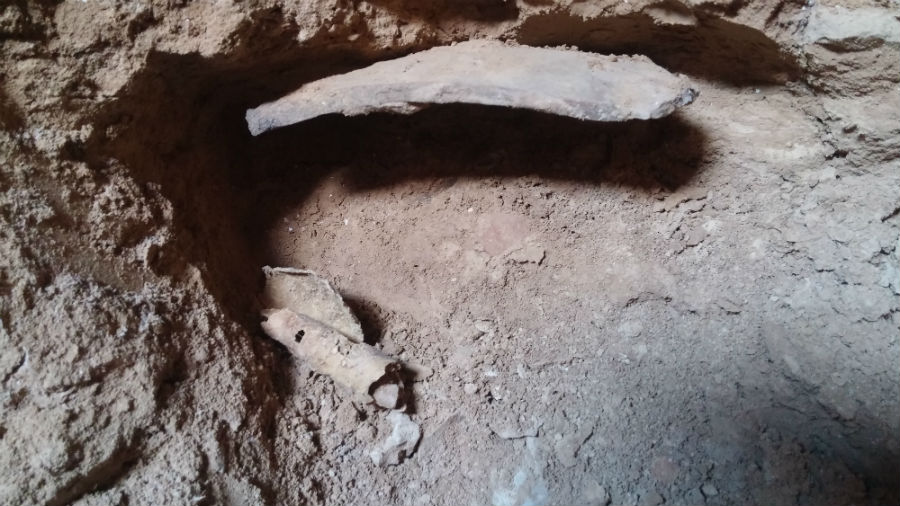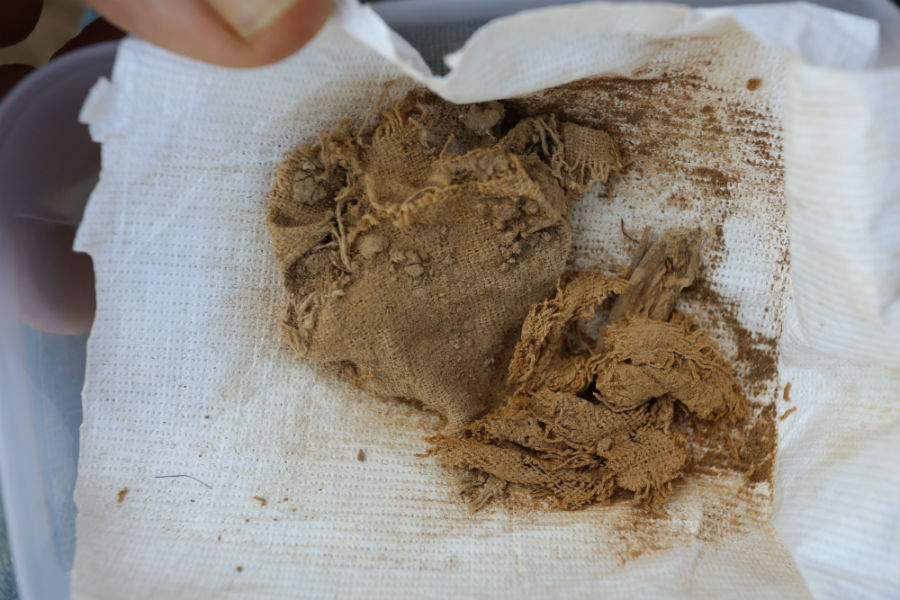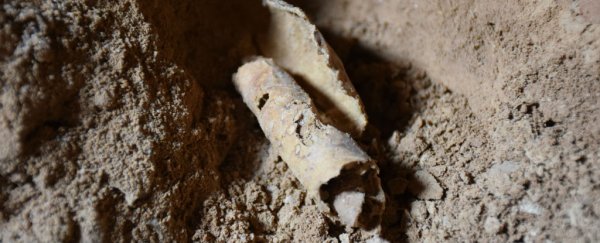Excavations on the cliffs west of Qumran - an archaeological site near the northwestern shore of the Dead Sea - have revealed a cave full of jars and lids for scroll storage, dated to the same time period as the Dead Sea Scrolls.
This collection of ancient texts, which are considered to have great historic significance for the region, include one of the oldest known Biblical manuscripts. The scrolls were found in 11 caves at Qumran in the 1940 and '50s, and archaeologists say they might have just found the 12th.
"This exciting excavation is the closest we've come to discovering new Dead Sea scrolls in 60 years," said excavation director, Oren Gutfeld from Hebrew University's Institute of Archaeology.
"Until now, it was accepted that Dead Sea scrolls were found only in 11 caves at Qumran, but now there is no doubt that this is the 12th cave."
While Gutfeld is taking definitively about the find, we need to keep in mind that no actual Dead Sea Scrolls have been discovered in this newly excavated cave.
Instead, the evidence suggests that the cave once contained scrolls from the Dead Sea Scroll era, but anything of value has since been looted.
The items that remain in the cave include jars that were built specifically to house scrolls, and a single piece of blank parchment that was being processed for writing.
 The blank parchment. Credit: Casey L. Olson and Oren Gutfeld
The blank parchment. Credit: Casey L. Olson and Oren Gutfeld
 Fabric found in the cave. Credit: Casey L. Olson and Oren Gutfeld
Fabric found in the cave. Credit: Casey L. Olson and Oren Gutfeld
Every single jar has been broken, and besides the single blank parchment, all of their contents appear to have been removed.
A pair of iron pickaxe heads from the 1950s have also been excavated from the site, which the team has attributed to Bedouins - nomadic people of the region - who looted the site around the same time that the 11 other caves were being excavated.
Evidence of a deliberate cave-in the team had to dig through to reach the remaining artefacts also points to looters trying to cover their tracks.
Just to give you an idea of how valuable these scrolls are, a fragment of an original scroll the size of a fingernail can cost up to U$1,000,000, according to the Biblical Museum at Liberty University, so you can hardly blame looters for wanting a piece of the action.
"Although at the end of the day no scroll was found, and instead we 'only' found a piece of parchment rolled up in a jug that was being processed for writing, the findings indicate beyond any doubt that the cave contained scrolls that were stolen," says Gutfeld.
"The findings include the jars in which the scrolls and their covering were hidden, a leather strap for binding the scroll, a cloth that wrapped the scrolls, tendons and pieces of skin connecting fragments, and more."
The items have been dated to the Second Temple period, which spanned from 530 BCE to 70 CE.
The 981 Dead Sea Scrolls that we currently know about - which contain both Biblical and non-Biblical writings - date from the 3rd century BCE to the 1st century CE.
Interestingly, since this cave now offers up the possibility that Dead Sea Scrolls could have once been housed here, the array of fragments that have made their way to research institutions and museums around the world could in fact be the scrolls the team is looking for.
While most of the Dead Sea Scrolls were found in the 11 Qumran caves, some are of an unknown origin, and Gutfeld suggests that they might have been originally housed in the newly found cave.
"Finding this additional scroll cave means we can no longer be certain that the original locations (Caves 1 through 11) attributed to the Dead Sea scrolls that reached the market via the Bedouins are accurate," he said.
Unfortunately, while the circumstantial evidence is all there, unless fragments of Dead Sea Scrolls can be found in the cave, or existing fragments can somehow be traced back to the location, the 12th cave will likely have a permanent question mark hanging over its head.
But the team has yet to publish their findings in a peer-reviewed journal, so there might still be evidence to be uncovered and analysed as the excavations continue into the coming months.
And, as Israel Hasson, director-general of the Israel Antiquities Authority points out, the cave is an important reminder that sites of archaeological significance still lie hidden in the Qumran cliffs, even after all these years of discovery.
"The important discovery of another scroll cave attests to the fact that a lot of work remains to be done in the Judean Desert and finds of huge importance are still waiting to be discovered," he said.
